In the following ranking, we evaluate the most affordable bachelor’s degrees in the District of Columbia to help students select the school and program that best meets their academic needs and professional goals. Although it is not a state, Washington, D.C. is an essential city in the United States. In addition to being the home of the President, the nation’s capital, and the location of all three government branches, D.C. lays claim to some of the top colleges and universities in the country. Unsurprisingly, many of the region’s institutions of higher learning excel academically throughout areas related to public service and politics, and all of them take advantage of the artistic, entertainment, and cultural opportunities citywide.
With campuses that offer views of some of the most iconic monuments in the country, access to highly coveted internships, and unparalleled diversity, it can be easy to justify the slightly expensive cost of pursuing a bachelor’s degree at a D.C.-based college. In addition, prospective students should also bear in mind the cost of living in “the District” and know that, despite the somewhat high cost of higher education, there are still a number of affordable bachelor’s degree colleges in the District of Columbia that go above and beyond to help students reach their educational goals without breaking the bank.
Methodology
In order to capture the balance between affordability and quality, we developed a specific set of core metrics related to class size, student success, and affordability. Regardless of whether you have a specific school in mind or you are just beginning to search for affordable bachelor’s degree colleges in the District of Columbia, remember to keep in mind important criteria and factors such as tuition rates, student-to-faculty ratios, and graduation rates. To help you during this confusing and time-consuming process, we conducted a search for the term “colleges in the District of Columbia” at the National Center for Education Statistics (NCES) using the College Navigator tool. We then awarded points based on the following methodology and cross-referenced our data with each school’s website to provide the most accurate information possible for 2019.
Average Cost of Attendance
Whether you are going back to school after decades of working or you are a recent high school graduate pursuing a bachelor’s degree for the first time, there is one thing that all students can agree on: the cost of a program is one of the first and most important things to think about when selecting a college or university. As you continue to navigate your options, however, try to avoid basing your decision only on tuition and instead consider both cost and the quality of the program. For instance, a high tuition rate does not necessarily mean the program is high-quality. In fact, an expensive private college may appear fantastic on paper, but it might lack a concentration you would like to pursue. On the other hand, an affordable state university may offer everything you are looking for and more. For the purpose of this article, we ranked tuition based on how much an in-state student would pay for one year of study if he or she were to take an average course load of 15 hours per semester.
Points:
Under $7,500: 3 points
$7,500 to $15,000: 2 points
$15,001 and above: 1 point
Student-to-Faculty Ratio
Student-to-faculty ratios can tell us a lot about a school, including the size of its classes, in particular. Although obtaining enrollment numbers is also an important part of the process, understanding average class size and whether you will have any opportunities for mentoring, advising, or individualized studies is just as critical. While some students thrive in larger environments and enjoy a wide range of extracurriculars to choose from, others are looking for more intimate environments that foster the development of personal relationships between students, peers, and professors. For this reason, we awarded the most points to colleges and universities that reported low student-to-faculty ratios of 10 or fewer students per professor.
Points:
10:1 or less: 3 points
11:1 to 15:1: 2 points
Greater than 15:1: 1 point
Graduation Rate
The final factor by which we evaluated and ranked schools was that of the graduation rate. As you narrow down your options, you may find yourself researching admission rates and the likelihood of being admitted into a particular program. While this is certainly worth considering, it is just as important to know how many students actually earned their degree. In other words, if a school reports low graduation rates, we can assume that students did not remain in the program or at that institution for some reason, in most cases due to a lack of faculty support, inexperienced professors, or tuition rates that were too costly for the quality of education students felt they were receiving. Therefore, we determined that the highest graduation rates deserved the highest number of points, and we awarded them based on the following ranges.
Points
More than 50 percent: 3 points
Between 30 percent and 50 percent: 2 points
Less than 30 percent: 1 point
Ranking Top 9 Best Affordable Bachelor’s Degree Colleges in the District of Columbia
9. Trinity Washington University
Washington, D.C.

Points: 5
School Website
Trinity Washington University, established in 1897, is a Roman Catholic University that was founded under the trusteeship of the Sisters of Notre Dame de Namur. The undergraduate program offered through school’s College of Arts & Sciences continues to maintain its original status as a liberal arts, women-only college, but men are accepted into the School of Professional Studies and School of Education at both the undergraduate and graduate levels. TWU is also comprised of a School of Nursing Professions for both men and women as well as a School of Business & Graduate Studies. TWU confers more than 40 low-cost academic programs, the most popular of which include majors in social psychology, business, criminal justice and law enforcement administration, communications, the liberal arts and humanities, and early childhood education. Boasting an impressive 11:1 student-to-faculty ratio, TWU offers many opportunities for students to benefit from personalized attention from their professors.
In-State Tuition: $24,150
Out-of-State Tuition: $24,150
Student-to-Faculty Ratio: 11:1
Graduation Rate: 36 percent
8. University of the Potomac
Washington, D.C.

Points: 5
School Website
Established in 1991, the University of the Potomac, formerly known as Potomac College, is a for-profit institution of higher learning with campuses in Washington, D.C. and Vienna, Virginia as well as a “Loop” location in Chicago. The university confers inexpensive certificate programs as well as associate, bachelor’s, and graduate degrees, and the school reports an annual undergraduate enrollment of fewer than 75 students. Several of the school’s bachelor’s degree offerings include majors in contract management, hospitality and tourism, and cybersecurity as well as information technology, business, and accounting. Students may earn their bachelor’s degree online or on-campus, depending on their academic needs and availability, and professors incorporate real-world experience into their classrooms. The school offers a vibrant multicultural atmosphere in the nation’s capital, and there is no shortage of opportunities for students to learn and be at the center of the country’s changes.
In-State Tuition: $15,984
Out-of-State Tuition: $15,984
Student-to-Faculty Ratio: 10:1
Graduation Rate: 15 percent
7. George Washington University
Washington, D.C.
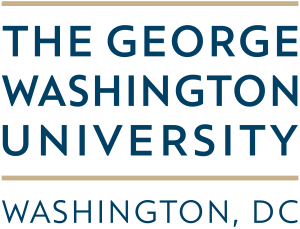
Points: 6
School Website
Chartered in 1821 by an act of the U.S. Congress, George Washington University is a private research university that is home to 14 colleges and schools, 100 research centers, and an expansive system of libraries. Although not the most affordable on our list, the school provides low-cost undergraduate and graduate degrees to more than 27,000 students annually, and its most popular majors include medical laboratory technician, international relations, political science and government, economics, nursing, finance, psychology, and international business. GW boasts five strategic initiatives that it developed to guide the university’s efforts over the next several years: institutional culture, medical enterprise, philanthropy and constituent engagement, research, and student experience. The school’s walkable, sprawling urban campus blends with the community’s local architecture, and it is just steps from numerous local monuments, the White House, and the Kennedy Center.
In-State Tuition: $55,230
Out-of-State Tuition: $55,230
Student-to-Faculty Ratio: 13:1
Graduation Rate: 81 percent
6. Georgetown University
Washington, D.C.

Points: 6
School Website
Founded as Georgetown College in 1789, Georgetown University is a private research university and home to a vibrant community of committed professional staff, distinguished faculty members, and accomplished students. Academic programs at Georgetown are heavily influenced by the school’s Jesuit tradition of educating the whole person. Georgetown is comprised of nine schools that offer affordable undergraduate and graduate degrees, including public policy, business administration, medicine, law, international relations, the sciences, and liberal arts degrees as well as a growing number of continuing education programs and specialized certificates. Outside of the classroom, students may participate in a number of activities, including student clubs and organizations as well as unparalleled opportunities for research at leading scientific institutes and centers. They may also choose to visit nearby famous landmarks and monuments, concert halls, theaters, and museums. In addition, many Georgetown students take part in community service and hold internships at numerous nearby civic and cultural institutions.
In-State Tuition: $54,104
Out-of-State Tuition: $54,104
Student-to-Faculty Ratio: 11:1
Graduation Rate: 95 percent
5. American University
Washington, D.C.
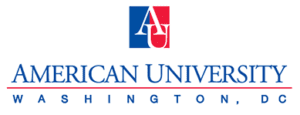
Points: 6
School Website
Established in 1893, American University is a private research university that is comprised of eight colleges and schools in law, education, public affairs, professional and extended studies, communication, business, arts and sciences, and international service. Affiliated with the United Methodist Church, AU enrolls more than 13,000 undergraduate and graduate students annually from as many as 150 different countries, solidifying AU’s reputation for cultural awareness and diversity. Students can choose from more than 160 affordable programs at the bachelor’s, master’s, and doctoral levels, and popular majors include international relations, business, political science and government, the liberal arts and humanities, economics, psychology, and public health. Approximately 89 percent of students participate in internships, and other opportunities in community-based learning and programs like DC Reads prepare students for careers in public service, nonprofit work, and politics.
In-State Tuition: $48,459
Out-of-State Tuition: $48,459
Student-to-Faculty Ratio: 11:1
Graduation Rate: 79 percent
4. Catholic University of America
Washington, D.C.
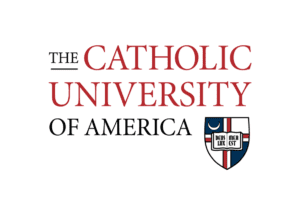
Points: 7
School Website
Established in 1887 by the Catholic bishops of the U.S. as a graduate and research center, the Catholic University of America enrolls 6,000 undergraduate and graduate students in more than 180 academic programs. Located on a 176-acre residential campus just three miles north of the U.S. Capitol, the school confers more than 60 bachelor’s, 78 master’s, and 45 doctoral degrees. Programs emphasize personal development, professional education, and the liberal arts, and CUA remains closely connected with Catholic organizations and the Catholic Church. Opportunities for student involvement include the campus ministry, more than 90 student organizations, open-mic nights, 5K runs, theater performances and concerts. The school is consistently recognized as one of the top 10 Catholic colleges in the nation as well as one of the “best value” private schools and among the most eco-friendly universities in the U.S.
In-State Tuition: $45,804
Out-of-State Tuition: $45,804
Student-to-Faculty Ratio: 7:1
Graduation Rate: 74 percent
3. Howard University
Washington, D.C.
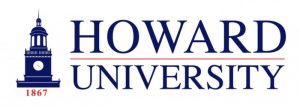
Points: 7
School Website
Established in 1867, Howard University is a private, federally chartered HBCU and a research university that enrolls more than 11,000 professional, graduate, and undergraduate students representing 66 countries and 50 states and territories. Howard offers more than 120 affordable areas of study that lead to undergraduate, graduate, and professional degrees. It is a top producer of African-American undergraduates in the fields of engineering and science, and other popular majors include biology, physical education teaching and coaching, communications, and political science and government. Comprised of 13 schools and colleges that award more than 120,000 degrees each year in the humanities, the sciences, and the arts, Howard’s research facility, School of Divinity, and School of Law each have dedicated campuses nearby. The school’s urban location on a 256-acre campus in Washington, D.C. puts students right in the middle of one of the country’s most powerful hubs of influence in the arts, economics, technology, health, government, and more.
In-State Tuition: $26,756
Out-of-State Tuition: $26,756
Student-to-Faculty Ratio: 8:1
Graduation Rate: 63 percent
2. Gallaudet University
Washington, D.C.
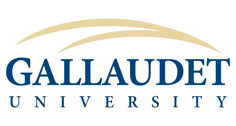
Points: 7
School Website
Situated on a 99-acre campus, Gallaudet University is a federally chartered, private university established in 1864 as the Columbia Institution for the Instruction of the Deaf and the Blind, a grammar school for both blind and deaf children. Today, Gallaudet remains the only institution of higher learning in which all services and programs are specifically designed to accommodate deaf and hard-of-hearing students. Gallaudet offers classroom instruction to more than 1,600 students in both American Sign Language (ASL) and English. Many of the school’s programs, including affordable majors in communication studies, interpretation, deaf studies, and ASL, promote deaf culture, although its academic offerings are varied and wide. Students may choose to major in technology, math, science, human services, or an area of business, and the school also operates a vibrant department of visual arts. The school boasts an average 7:1 student-to-faculty ratio as well as an alumni base of more than 20,000 members worldwide.
In-State Tuition: $17,038
Out-of-State Tuition: $17,038
Student-to-Faculty Ratio: 7:1
Graduation Rate: 53 percent
1. University of the District of Columbia
Washington, D.C.
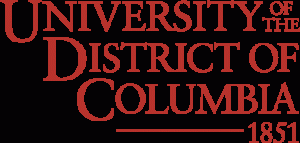
Points: 7
School Website
Established in 1851, the University of the District of Columbia is a public HBCU and the only public university in the city. A member-school of the Thurgood Marshall College Fund and one of the few urban land-grant universities in the U.S., UDC offers cheap associate, bachelor’s, master’s, doctoral, and professional degrees to more than 5,600 students annually. UDC is comprised of the College of Arts & Sciences, School of Business & Public Administration, School of Engineering & Applied Sciences, David A. Clarke School of Law, Community College, and the College of Agriculture, Urban Sustainability, and Environmental Sciences (CAUSES). Students may pursue low-cost, inexpensive majors across a number of industries, and popular programs include business, the liberal arts and humanities, legal studies, education, and political science and government. Graduates of this affordable HBCU become transformative leaders in nonprofit sectors, the government, the workforce, and beyond, thanks to UDC’s commitment to five core values: integrity, innovation, sustainability, collaboration, and excellence.
In-State Tuition: $5,888
Out-of-State Tuition: $12,416
Student-to-Faculty Ratio: 10:1
Graduation Rate: 16 percent
Frequently Asked Questions
What Are the Most In-Demand Careers in the District of Columbia for Graduates With a Bachelor’s Degree?
Whether you are a recent college graduate or you are just beginning to pursue your bachelor’s degree in D.C., if you find yourself thinking about your future career and you have an interest in technology or healthcare, you are in luck. Three of the area’s fastest-growing, most in-demand careers come from just two industries: network and computer systems administrator, computer software developer, and home health aide. The projected job growth, according to the U.S. Bureau of Labor Statistics, for these three occupations from 2016 to 2026 is:
- Network and Computer Systems Administrator: 6 percent
- Computer Software Developer: 24 percent
- Home Health Aide: 41 percent
Although a bachelor’s degree is typically the minimum education required for positions as network and computer administrators and for computer software developers, there is no formal education needed for aspiring home health aides. These professionals may, however, be required to seek certification, while voluntary certification is available for network and computer systems administrators.
Other in-demand occupations that require a bachelor’s degree or higher include public relations specialists, registered nurses, and accountants and auditors as well as management analysts, general and operations managers, and financial managers. Human resources specialists, social science research assistants, and market research analysts and marketing specialists are also in great demand, and the job outlook is positive for editors, public relations and fundraising managers and computer systems analysts.
What Are the Fastest-Growing Industries in the District of Columbia?
The District of Columbia is a hub for data use and collection, including statistics and analyses of world and federal economies, health issues, social reforms, and politics. Jobs in information technology are enjoying steady growth and will continue to do so as more industries begin to accept, implement, and advance in technology. Some of the most tech-savvy industries in D.C. include job services, family services, health services, history, and film-making. According to the D.C. Department of Employment Services, the top 15 fast-growing industries based on the number of open positions in 2016 to the projected number of available jobs in 2026, provided as a percentage of growth rounded to whole numbers, include:
- Healthcare Services: 54 percent
- Ambulatory Healthcare Services: 38 percent
- Outpatient Care Centers: 38 percent
- Educational Support Services: 35 percent
- Other Information Services: 34 percent
- Offices of Other Health Practitioners: 31 percent
- Other Ambulatory Healthcare Services: 26 percent
- Social Assistance: 26 percent
- Medical and Diagnostic Laboratories: 24 percent
- Management, Scientific, and Technical Consulting Services: 23 percent
- Performing Arts, Spectator Sports, and Related Industries: 22 percent
- Heavy and Civil Engineering Construction: 22 percent
- Offices of Physicians: 22 percent
- Computer Systems Design and Related Services: 21 percent
- Software Publishers: 20 percent
What Are the Highest-Paying Jobs in the District of Columbia?
To determine the highest-paying jobs in the District of Columbia, we consulted the U.S. Bureau of Labor Statistics (BLS). The BLS provides occupational employment and wage estimates calculated with data collected from all employers in every industry sector in Washington, D.C. According to the BLS, the annual mean wage of all occupations as of May 2018 was $87,920, or a mean hourly wage of $42.27. The top three highest-paying jobs include chief executives, who earned $247,500, and surgeons, who reported an annual salary of $244,230, as well as obstetricians and gynecologists, who made $225,260.
However, for our purposes, we wanted to provide salary information in D.C. for occupations outside of the medical field or for jobs that would require a master’s or doctoral degree. Although doctors and lawyers do require a bachelor’s degree to be admitted into medical school or law school, we took a closer look at the following 10 occupations that one could either with an undergraduate degree or with a bachelor’s and on-the-job training or additional experience.
- Public Relations and Fundraising Managers: $188,050
- Computer and Information Systems Managers: $168,500
- Financial Managers: $166,710
- Marketing Managers: $165,640
- Human Resources Managers: $162,410
- Personal Financial Advisors: $158,460
- Financial Examiners: $157,860
- Postsecondary Nursing Instructors and Teachers: $153,830
- Architectural and Engineering Managers: $152,130
- General and Operations Managers: $150,970
In addition, according to the BLS, the top-paying industries by occupation in the District of Columbia include legal occupations, with a yearly salary of $169,310 across all positions, followed by management occupations, reporting average of earnings of $149,680, and architecture and engineering occupations, with an annual mean wage of $110,200. Life, physical, and social science occupations and computer and mathematical occupations round out the top five, with average annual earnings of $110,170 and $108,600, respectively.
What Are the Best Schools in the District of Columbia for Bachelor’s Recipients?
Washington, D.C. is a beacon for higher education. Despite its size, the city is home to some of the “best value” colleges in the country that offer exceptional returns on investment (ROI) as well as high early and mid-career salaries, according to PayScale. Whether you would like to attend a school in the District of Columbia due to an interest in politics or you are simply comparing schools that produce the highest salaries after graduation, it is important to consider what happens after you earn your degree. In other words, as you are selecting a program, understand not only the cost of tuition for the program itself but also how much you can make after graduating with a bachelor’s degree from the following schools.
We took six of the nine schools we detailed above and provided salary earnings for students just beginning their careers and for those midway through their careers as well as 20-year net ROI figures, or the amount students can expect to earn 20 years after graduating. We ranked these six schools in order from the highest to the lowest ROI and provided salary estimates for in-state students with an undergraduate degree who did not accept a financial aid package to help offset the cost of tuition.
- 1. Georgetown University
– 20-Year Net ROI: $619,000
– Early Career Pay: $63,700
– Mid-Career Pay: $128,300 - 2. George Washington University
– 20-Year Net ROI: $475,000
– Early Career Pay: $59,000
– Mid-Career Pay: $119,200 - 3. American University (tie)
– 20-Year Net ROI: $389,000
– Early Career Pay: $53,700
– Mid-Career Pay: $106,500 - 3. Catholic University of America (tie)
– 20-Year Net ROI: $389,000
– Early Career Pay: $55,700
– Mid-Career Pay: $106,100 - 5. Howard University
– 20-Year Net ROI: $300,000
– Early Career Pay: $54,400
– Mid-Career Pay: $98,900 - 6. Gallaudet University
– 20-Year Net ROI: $70,500
– Early Career Pay: $40,600
– Mid-Career Pay: $70,700
Founded in 1789, Georgetown University is recognized as the oldest Jesuit institution of higher learning in the country. It is also one of the top colleges in the District of Columbia for earning a bachelor’s degree, as evident by its $619,000 ROI and its early and mid-career salaries, both of which knock other universities in D.C. out of the park. Known as the home of one of the oldest debate clubs in the nation as well as for its activism, Georgetown has produced a number of notable alumni, including U.S. Supreme Court Justice Antonin Scalia and former U.S. President Bill Clinton.
Similarly, George Washington University has a history for producing illustrious alumni, including Jackie Kennedy, Senate Majority Leader Harry Reid, and former Secretary of State Colin Powell. D.C.’s largest university by enrollment, GWU is just a short walk from the White House and offers plenty of opportunities for research and community service. GWU’s $475,000 20-year net ROI is nothing to scoff about, either, and in-state students who earn a bachelor’s degree can enjoy a comfortable starting salary of around $59,000, depending on their field of study.
The District of Columbia, known for its cultural diversity, provides all types of job opportunities across a number of fields ranging from hospitality to healthcare to retail to corporate law to high-tech engineering. In fact, over the past few years, the capital of the U.S. has become one of the top cities in the nation in terms of career advancement. Whether you have a specific career in mind and you know the institution you would like to attend or you are still considering your options, there is certainly no shortage of affordable bachelor’s degree colleges in the District of Columbia that will prepare you to meet your career goals, whatever they may be.
AS Staff
This concludes our ranking of the top nine most affordable bachelor’s degree colleges in the District of Columbia.
Other Rankings of Interest:
25 Best Affordable Online Business Administration Degree Programs (Master’s)
40 Best Affordable One-Year Accelerated Master’s Degree Programs
50 Most Affordable Colleges with the Best Return
25 Best Affordable Online Mathematics/ Statistics Education Degree Programs (Master’s)
25 Most Affordable Master’s of Statistics Degrees
20 Best Affordable Online Colleges for Computer Networking Degree
10 Most Affordable Law Schools in the United States
15 Best Affordable Animation Degree Programs (Bachelor’s)
40 Best Affordable Pre-Med Degree Programs (Bachelor’s)
15 Best Affordable Film Studies Degree Programs (Bachelor’s)
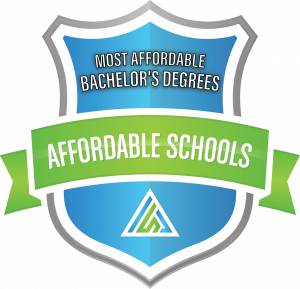
 The Best Colleges
The Best Colleges The Lowest Costs
The Lowest Costs The Highest Returns
The Highest Returns